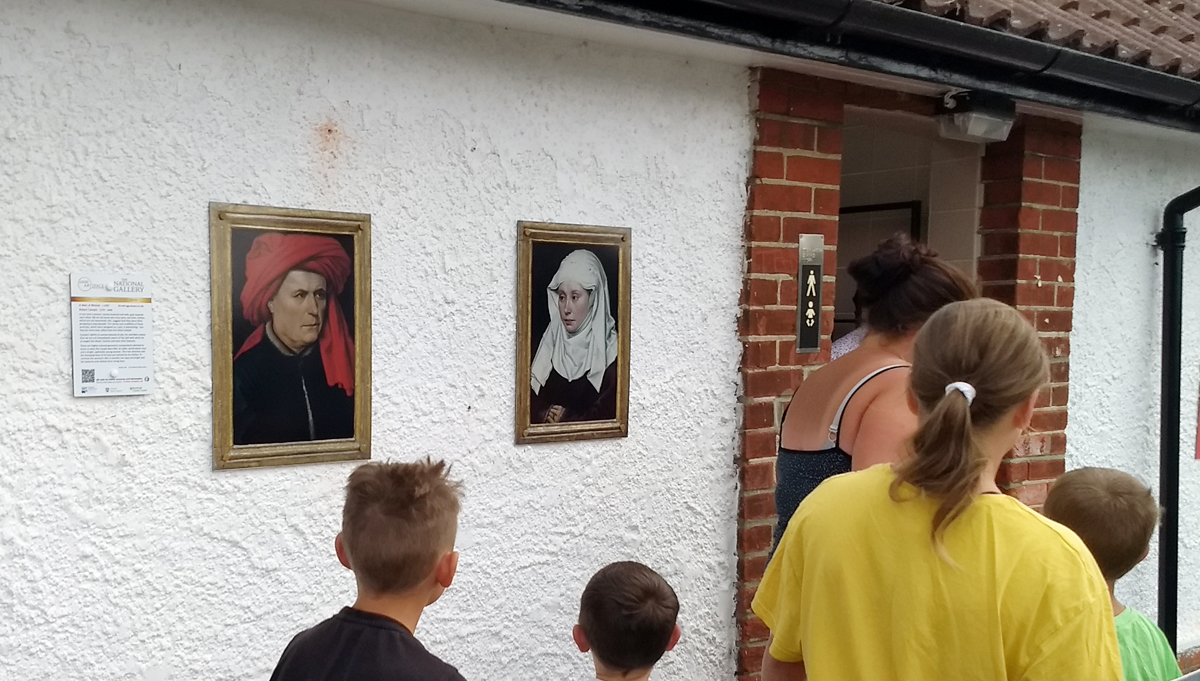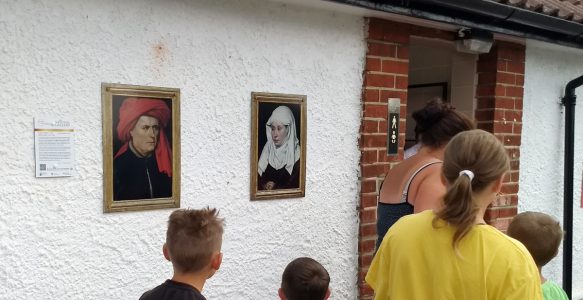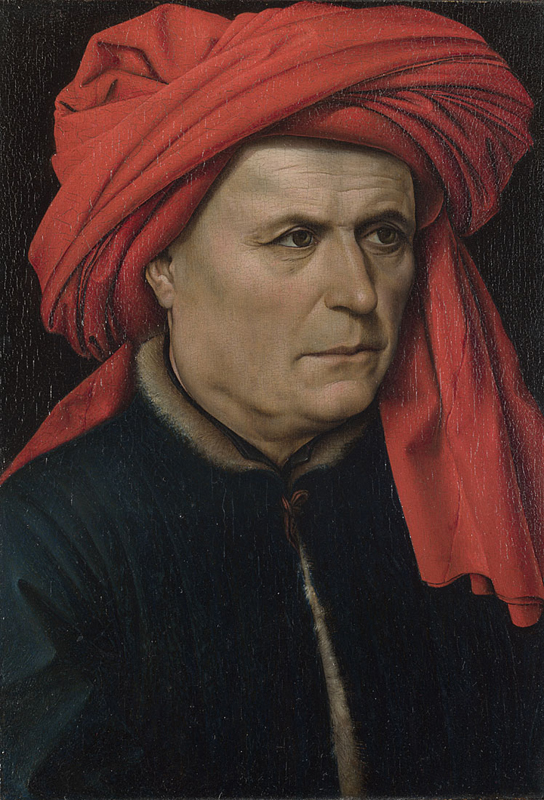You can find Campin’s portraits in the Cadogen car park
A man and a woman, clearly husband and wife, gaze towards each other. We don‘t know who they were, but their clothes, which are not excessively rich, suggest that they were relatively prosperous townspeople. The clarity and credibility of these portraits, which were designed as a pair, is astonishing – but they do more than reflect how the sitters looked.
Campin’s ability to convey textures of skin, fur and fabric means that we are not immediately aware of the skill with which he arranged the sitters’ clothes and even their features. These are highly ordered geometric compositions devised to show us what the couple were like: an older, world-weary man and a bright, optimistic young woman. The man slouches and the drooping lines of his face are echoed by his clothes; the woman’s skin is smooth, her eyes are bright and her features and clothes form rising lines.
A Man, Robert Campin, 1435
Oil with egg tempera on oak, 40.7 × 28.1 cm
This striking portrait of a man in a red hat forms a pair with Campin’s A Woman – the sitters were clearly husband and wife. We do not know who they were, but their clothes suggest they were prosperous townsfolk, perhaps from Tournai where Campin lived and worked.
Campin has arranged the older husband’s clothes and face to convey his character: he seems world-weary, uncertain and disillusioned. His face is dimly lit and his skin sags beneath his jaw and forms crow’s feet around his dull eyes. He slouches. His head is off centre, and his hat has been brought forward so it seems to press down on his head.
Instead of looking out at us he gazes across at his wife. The shadows cast on his face stress the falling lines of the pattern Campin has created. His hands are not included, perhaps because they would have been at odds with this pattern.
read more at nationalgallery.co.uk
A Woman, Robert Campin, 1435
This striking portrait of a woman forms a pair with Campin’s portrait A Man: the sitters were clearly married. We don’t know who they were, but their clothes suggest they were prosperous townsfolk, perhaps from Tournai where Campin lived and worked.
Campin has conveyed their personalities and relationship as well as what they looked like. The woman appears younger than her husband, and more forceful and optimistic. Campin has placed her near eye in the centre of her panel so that she dominates the composition in a way her husband does not. Her skin is smooth, and her bright, wide-open eyes curve up at the corners, a movement echoed and amplified by the crisp folds of her headdress.
read more at nationalgallery.co.uk
Robert Campin
Campin is usually now assumed to be identical with the Master of Flémalle. He was, with van Eyck, the founder of the realistic style of oil painting in the Netherlands in the early 15th century. His influence was further extended by his pupil Rogier van der Weyden. Campin was active at Tournai from 1406. The group of works attributable to him include three life-sized panels, formerly at Flémalle and now at Frankfurt, the National Gallery’s ‘Virgin and Child before a Firescreen’ and ‘Virgin and Child in an Interior’.




